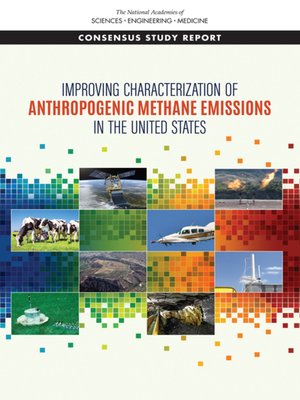Improving Characterization of Anthropogenic Methane Emissions in the United States
ebook
By National Academies of Sciences, Engineering, and Medicine

Sign up to save your library
With an OverDrive account, you can save your favorite libraries for at-a-glance information about availability. Find out more about OverDrive accounts.
Find this title in Libby, the library reading app by OverDrive.



Search for a digital library with this title
Title found at these libraries:
| Library Name | Distance |
|---|---|
| Loading... |
Understanding, quantifying, and tracking atmospheric methane and emissions is essential for addressing concerns and informing decisions that affect the climate, economy, and human health and safety. Atmospheric methane is a potent greenhouse gas (GHG) that contributes to global warming. While carbon dioxide is by far the dominant cause of the rise in global average temperatures, methane also plays a significant role because it absorbs more energy per unit mass than carbon dioxide does, giving it a disproportionately large effect on global radiative forcing. In addition to contributing to climate change, methane also affects human health as a precursor to ozone pollution in the lower atmosphere.
Improving Characterization of Anthropogenic Methane Emissions in the United States summarizes the current state of understanding of methane emissions sources and the measurement approaches and evaluates opportunities for methodological and inventory development improvements. This report will inform future research agendas of various U.S. agencies, including NOAA, the EPA, the DOE, NASA, the U.S. Department of Agriculture (USDA), and the National Science Foundation (NSF).







